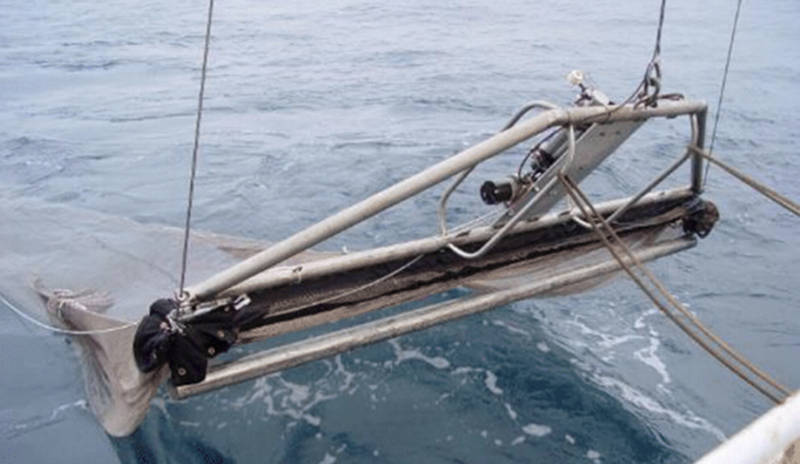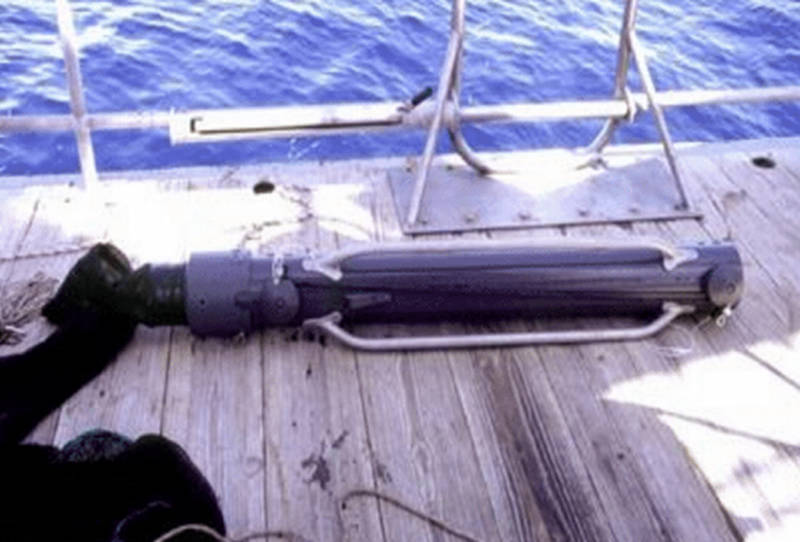
By Tamara Frank, Nova Southeastern University

Figure 1. 9m2 Tucker Trawl at the surface, about to be deployed. Image courtesy of Journey into Midnight: Light and Life Below the Twilight Zone. Download image (jpg, 47 KB).
It’s critically important for this research that we collect live animals in excellent condition, and a 9m2 Tucker Trawl with a carefully designed collecting vessel at the end of the net, called a cod-end, allows us to do just that. Tucker Trawls come in a variety of sizes and are affectionately referred to a baby Tuckers for the smaller ones and mother Tuckers for the larger ones.
The cod-end is constructed of three-quarter-inch thick PVC pipe and closes via ball valves when the net closes. The net is remotely opened at depth, and while it is fishing, the ball valves at either end of the cod-end are open, and animals are trapped inside in a mesh bag. When a signal is sent to close the net, the ball valves on the cod-end snap shut, trapping animals inside the cod-end in water at their normal ambient temperatures. The thick PVC walls insulate the water against temperature changes on the trip to the surface.
Most people think that pressure changes will kill deep-sea animals on the trip to the surface, but animals that live shallower than 2,000 meters (6,560 feet) handle the pressure changes quite well. The only ones living at these depths that do have problems are fish with swim bladders, as these bladders are filled with air and expand too rapidly on the trip to the surface. Animals without air-filled spaces, like fish without swim bladders, crustaceans, and squids, can handle the pressure, but they can’t handle the temperature changes. At their normal depths, the temperature is around 7°C (45°F), while surface waters in the Gulf of Mexico in June can be up to 30°C (86°F). This temperature shock will kill them, so the insulated cod-end is essential to live collections of deep-sea animals

Figure 2. Cod-end attached to the end of the net. Image courtesy of Journey into Midnight: Light and Life Below the Twilight Zone. Download image (jpg, 57 KB).
The cod-end is also light-tight, critically important for studies of visual physiology. Animals that are being collected for experiments on their visual physiology also need to be protected from surface light levels, as their eyes are adapted to be extraordinarily sensitive and exposing them to surface light levels will permanently blind them. Once the net has been brought onboard, the closed cod-end can be detached from the net, carried into a light-tight room, and opened under dim right light to remove the animals into refrigerated maintenance containers.